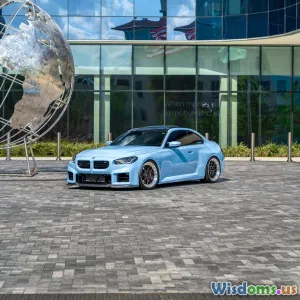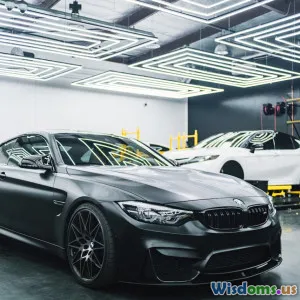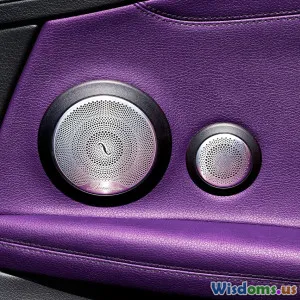
How Your Car Model Influences Monthly Insurance Rates
8 min read Explore how your car model directly impacts your monthly insurance rates and learn strategies to choose vehicles that keep your premiums affordable. (0 Reviews)
How Your Car Model Influences Monthly Insurance Rates
When it comes to car insurance, many drivers may think that premium rates depend largely on personal factors like age, driving history, or location. However, the car model you drive is equally, if not more, influential in determining how much you pay each month. But why does your choice of vehicle matter so much in insurance calculations?
This article explores the intricate relationship between your car model and insurance costs. It unveils the criteria insurers use to assess risk, highlights real-world examples, and shares strategies to make smarter choices for your wallet.
Understanding the Basics: Insurance Premiums and Risk Assessment
Insurance companies calculate premiums based on the risk they perceive when covering a specific driver and vehicle. This risk factor hinges on several variables tied to the car model itself:
- Repair costs: How much it costs to fix the car after an accident.
- Safety features and ratings: The likelihood of injury or damage.
- Theft rates: How often the model is targeted by thieves.
- Frequency and severity of claims: Historical data on claims related to that model.
- Market value: How expensive it is to replace or repair.
For example, a luxury sports car often commands higher premiums than a compact sedan because it tends to be involved in higher-speed crashes, costs more to fix, and attracts thieves.
1. Repair and Replacement Costs Impact Insurance
How Luxury and Exotic Cars Cost More
Repair bills directly feed into insurer payouts. Exotic materials, specialized parts, and advanced technology can drastically escalate repair costs.
- Example: A 2023 Porsche 911’s front bumper alone can cost over $4,000 to replace.
- Impact: Insurers pass these costs to owners via steeper premiums.
In comparison, prevalent economy models like the Toyota Corolla have uniform, inexpensive parts.
Aftermarket Modifications and Their Influence
Cars altered for performance upgrades or body kits might increase risk – both due to added risk-taking behavior and repair complexity, driving premiums up.
2. Safety Features: A Key Factor for Lower Rates
Cars equipped with advanced safety technologies such as automatic emergency braking, lane-keep assist, or multiple airbags often enjoy reduced insurance rates.
-
Statistical Insight: According to the Insurance Institute for Highway Safety (IIHS), cars with Top Safety Pick+ ratings see premiums reduced by up to 10-15% compared to less-protected vehicles.
-
Real-World Example: A driver switching from a model without crash avoidance tech to a Honda Accord, renowned for its safety suite, can experience meaningful monthly savings.
3. Theft Rates: The Invisible Insurance Cost
Insurance premiums account for how likely a car is to be stolen or vandalized.
- Why Some Models Are Targets: High demand for certain luxury vehicles or parts drives theft.
- Data: The National Insurance Crime Bureau’s Hot Wheels report identifies vehicles like the Honda Civic and Ford F-150 as frequent theft targets, increasing premiums on those models in specific regions.
Interestingly, some high-end electric vehicles have disruptive security, which can lower insurance cost despite their high market value.
4. Claim Frequency and Severity Related to Car Models
Insurance providers analyze claim statistics derived from specific vehicles.
- High-performance cars typically incur more frequent and severe claims.
- Vehicles popular among younger drivers or in high-traffic areas can see elevated claims.
For instance, the BMW M3 historically displays higher claims cost compared to family sedans, driving up insurance rates.
5. Market Value and Depreciation
More valuable cars lead to higher premiums because the insurer’s potential payout increases.
- New vs. Old Models: Newer cars see higher insurance costs relative to older, fully depreciated vehicles.
- Inflation and Replacement Costs: Rising vehicle repair costs globally have pushed insurance rates higher, particularly for newer models with complex tech.
Practical Tips: Choosing Car Models for Better Insurance Rates
Do Your Research Ahead
Before purchasing, check reputable sites or insurer tools for model-specific insurance averages.
- Notable statistics: Insurer data reveal models like Subaru Outback or Mazda CX-5 have lower average premiums versus similar-sized competitors.
Opt for Safety and Standard Equipment
Cars fully equipped with modern safety systems typically save you money.
Avoid High-Theft or High-Repair-Cost Models
If resale or modifiable models are your preference, factor insurance into your total ownership cost.
Consider Telematics Insurance
Insurers offering pay-how-you-drive programs may mitigate some cost differences by focusing on safe driving behavior over model risk.
Conclusion: Your Car Model Is a Foundational Element in Insurance Costs
The model of your vehicle shapes your insurance premiums more deeply than most casual observers realize. From repair complexity, safety features, and theft risk to claim history and market value, insurers piece together how costly it might be to cover your car.
By selecting models that boast confirmed safety credentials, have low theft records, and modest repair costs, you can substantially alleviate monthly insurance expenses. Given insurance’s substantial bite into annual vehicle ownership costs – sometimes thousands annually – this knowledge empowers you to make smarter, financially savvy car choices.
Always couple personal driving safety improvements with well-informed car model selection to optimize insurance outcomes, peace of mind, and your overall driving budget.
References:
- Insurance Institute for Highway Safety (IIHS): Safety impact analysis on insurance rates.
- National Insurance Crime Bureau (NICB): Vehicle theft statistics.
- Edmunds.com: Average repair costs by car model.
- Market research studies on insurance premiums by vehicle segmentation.
Stay informed. Drive safe. Save smart.
Rate the Post
User Reviews
Popular Posts

















